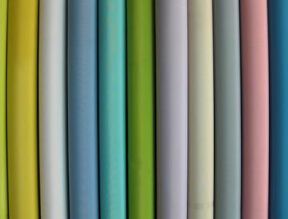Can clothes made of nylon and spandex be worn close to the body?
Nylon is the title of polyamide fiber in China. The origin of this title is that Jinzhou, China was the first to produce this type of composite fiber. This fiber system was created by the American DuPont company Carlisle in 1938 and named Nylon, now transliterated as nylon. It is widely used in industry and civilian applications.
Spandex is a constituent fiber with high elongation at break (over 400%), low modulus, and high elastic recovery rate. Spandex is generally not used alone, but is added in small amounts to the fabric. This type of fiber has both rubber and fiber functions.

Someone asked about thermal underwear, which contains 60% cotton, 35% nylon, and 5% spandex. It is unknown whether wearing nylon and spandex close to the body will be harmful to the human body, and whether it can be worn when sleeping at night. Actually, there are almost no cotton fabrics nowadays, and cotton is not wear-resistant. If you are allergic to these materials, you can still check the water washing label when choosing underwear, and try to choose underwear with a higher cotton content.
Article source: Nylon colored yarn
-
05-27
The reason why fabrics containing spandex are prone to yellowing
Spandex is a commonly used fiber variety in our daily lives, characterized by good elasticity, low fineness, high elastic modulus (cracking elongation can reach 400-800), and low specific gravity. Spa
-
04-24
Colored non dyed nylon with synthetic fiber raw material
The current conventional fiber coloring mostly uses yarn dyeing method, which has long process, high loss, high cost, and the product has color difference and low color wash fastness. Yarn is prone to
-
03-26
What are the characteristics of non dyed spandex?
Non dyed spandex has also been widely used in recent years. Non dyed spandex fiber can be blended with fibers such as nylon, polyester, acrylic, cotton, wool, etc., which can give fabrics excellent el
-
02-24
The influence of yarn structure on fabrics
The basic characteristics of yarn include its appearance and shape, twisting characteristics, fiber transfer and distribution characteristics in the yarn, as well as the surface fuzz and internal loos
